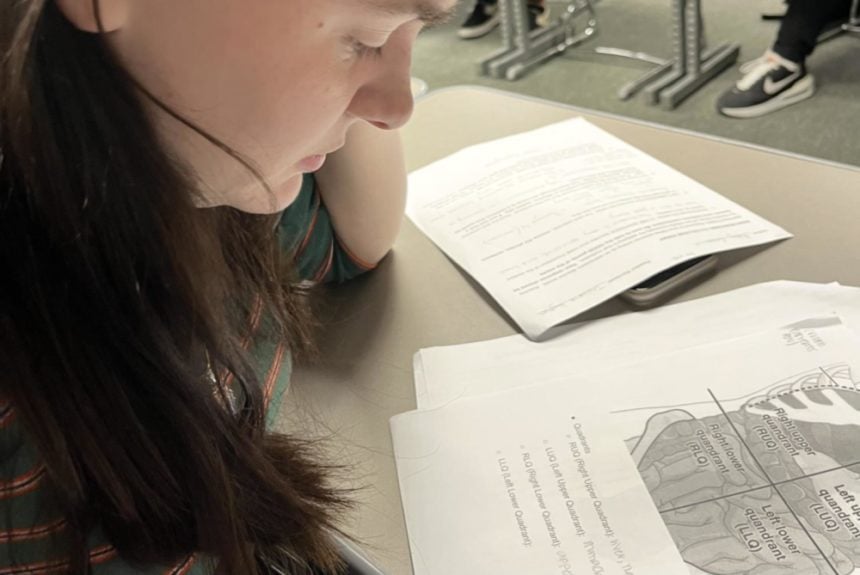As a senior, it took me three years to try to find the most reasonable ways to study. Truth be told, I found I do enjoy it when I study on my own with some good music, or an entertaining movie that I’ve watched and re-watched, as I’m fond of multitasking. I hope these tips aid whoever needs them, since I’ve found they help me and some other students as well.
History
In middle school, some teachers have students create a table of contents in their journals. They do this in hopes that the students get in the habit of initiating organization in their brains. However, depending on how the student thinks, it doesn’t always work the way they want. Usually just a few short weeks in, they become a mess, especially seniors, as senioritis sets in, a term referring to the lack of motivation seniors experience resulting from stress from classes. Despite the name, senioritis can affect all grade levels.
This next tip might take some time to work with, depending on the teacher. Some teachers may talk through the lesson at a faster pace than their students can write. Others post slideshows the students can follow along with. In my opinion, hand writing notes in color (highlighting certain words or using a colored pen to write them) is a good method of studying, because sometimes the brain can’t register the gray pencil on the white paper.
Writing out notes happens to be more effective, because it activates a certain part of the brain and helps students understand whole concepts. According to TheGlobalScholars.com, a benefit of typing out notes is that online notes can hold more tools and stay neater than pencil and paper. A con, however, is lower retention on information and a more shallow grasp on conceptual learning.
Lastly, if a teacher offers a reliable study guide that comes with extra credit (yes, U.S. History students, this is for you) do it. Five extra points goes a long way and it assists in memorization skills. And per usual, so does paying attention every now and then.
English
Much like math, there isn’t much studying that can be done. For vocabulary, there’s the ever so obvious: hand write them but there are many other ways to study up!
When it came to doing vocabulary of any kind I used word association, which means working to connect the word to the meaning or vice versa. It works by association sensory stimuli that reminds the student of something else. According to the Pennington Publishing Blog, the association technique connects the items or ideas we want to remember to one visual theme. Recent hemispheric brain research has proved the power of associations.
One of the best ways to study up for a visual learner is through images and illustrations. Similar but slightly different from the word association method, the student can make connections to vocabulary through drawing pictures. It can be the meaning of the word or an object or action that reminds you of it. Graphic organizers typically provide a better idea for those who learn visually.
Math
When it comes to studying for math, the best advice I have will always be to pay attention, do the homework and certainly do the review, as reviews are an important tool for success. According to skyward and the state of Texas, again, students need four math credits to graduate. Three of which are mandatory required classes. On-level wise: Algebra One, Geometry, and Algebra Two. If you chose an accelerated math track in middle school, then you started back in eighth grade on this path. I spent most of my elementary and middle school career teetering on the edge of passing and failing, and these are the tips that helped me become better at managing math classes.
Practice. Practice makes perfect, and it is the best and easiest way to become confident that you know the material you’ve learned.
Take good notes that you will understand, so that you can reference them later.
Finally, write down the equations your teacher does for reference. That way, if you didn’t understand in the moment, you can look back at your notes at home and work through them until they make sense.
Science
Most science courses can be aced by paying attention and taking good notes. Throw some color on the paper, highlight what’s important, underline to differentiate. That’s the most helpful advice I can give. Make Quizlets, or do Kahoots with your friends. If you’re a visual learner, draw out pictures and diagrams.
Truth be told, certain units include easy math and formulas. I can’t stress enough how important it’s become to copy down formulas and memorize them over the past four years, especially if you know teachers won’t be providing them on the test. Understanding the material along with knowing formulas by heart will set you up for success.
Overall
Those are just some ways to help you be successful through the years as assignments pile up. If these tips don’t work for you, that’s okay. Everyone is wired differently, and these are only a few study methods out of many possibilities. However, these should provide a guide for succeeding at your core classes and being efficient with your time.
This article originally appeared in The Eagle Nation Online.
Photo credit: Brooke Murphree


